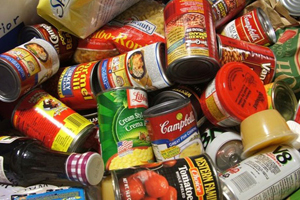Eight million Baby Boomers use charitable food assistance to make ends meet. Pre-seniors tend to struggle more than their elders as they do not yet qualify for assistance, such as Social Security or Medicare, and are beginning to experience expensive health issues that contribute to their inability to buy food.
The report was generated from data collected in Feeding America’s “Hunger in America” survey, which is developed from 60,000 face-to-face interviews with those using the nonprofit’s food pantries and soup kitchens, according to Ross Fraser, Feeding America’s director of media relations. AARP Foundation funded the study.
Baby Boomers, described as “pre-seniors” ages 50 to 64, represent a larger portion of Feeding America’s service population, 8 million, than those ages 65 and older, 5 million, study results show.
In addition to illustrating the quantity of older clients dependent on food assistance, the survey results revealed related obstacles clients are facing, Fraser said. Of those surveyed, 58 percent had unpaid medical expenses, 59 percent described their health as poor and 72 percent lived in a household experiencing poverty.
Feeding America changes the formula for its Hunger in America report from year-to-year so it is difficult to compare the most recent figures with surveys from 2010 and 2006. Still, the 2014 data provides Feeding America with some valuable information about its clientele and how best to serve them, Fraser said.
A growing portion of Feeding America’s older population, for instance, suffers from diabetes or hypertension, Fraser said. Many food banks now have nutritionists on staff and a program is in the works to pair clients with hypertension or diabetes with a nutritionist at their nearest pickup location, according to Ross.
“[The survey] demonstrates to us that we need to get more nutritious food for the needs of this population to be met,” Fraser said.
The study also provides Feeding America with hard data when appealing to Congress to preserve programs that might be on the chopping block, Fraser said. Preserving government assistance programs is important because unlike Feeding America’s younger clients who might visit a pantry a few times per year, seniors tend to factor pantries into their monthly budgets.
“With seniors, their circumstances don’t change,” Fraser said. “If you are above reasonable working age, you aren’t going to suddenly become vice president of a company. A lot of people live on Social Security checks of $700 or less and so they will rely on us for the rest of their lives.”
The chronic nature of hunger among seniors has been of particular interest to the National Council on Aging (NCOA) in recent years, according to Lura Barber, director of the council’s hunger initiatives. Seniors are still recovering from the recession, Barber said, with many 401(k) and 403(b) retirement plans yet to completely rebound.
Though many seniors are living on a fixed budget, the cost of living has risen, creating situations in which seniors are forced to choose between food, housing, transportation and medication, Barber said. From 2009 to 2015 the consumer price index for all urban consumers increased by about 10 percent, according to data from the U.S. Bureau of Labor Statistics. Food is often the necessity that seniors choose to pinch pennies on, according to Barber. “When you have these fixed incomes and the cost of living is rising, the cost is hunger,” Barber said. NCOA serves many Medicare beneficiaries’ technical resource center and through that network has begun helping seniors enroll in the Supplemental Nutrition Assistance Program (SNAP), according to Barber.
While the minimum SNAP subsidy is $15 per month, the average senior receives $113 monthly, a sum that could have major impacts on budgets, Barber said. NCOA anticipates releasing a best practices report for senior SNAP enrollment this month, which it hopes will help its affiliates and other organizations that address hunger.
Dr. James Powers, director of the Vanderbilt-Reynolds Geriatrics Education Center in Nashville, Tenn., and a member of The American Geriatrics Society, said that he has seen firsthand the health implications of seniors struggling to put food on the table. When budgets are tight, Powers said, older patients tend to neglect medication or turn to less expensive food options that are typically high in sodium and complicate health issues such as hypertension.
AGS, according to Powers, has policies in place encouraging efforts to improve access to inexpensive, healthy food. Physicians are also taking on more of an advocacy role in making sure such programs are supported.
It’s a challenge that is likely to be a long-term battle, according to Powers. America is in the third year of what is to be a 20-year span during which roughly 10,000 people will turn age 65 every day. NPT











